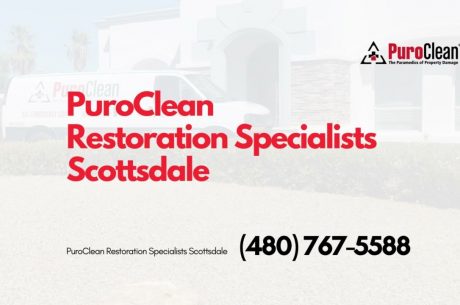Dealing with the aftermath of water damage, whether it’s due to a community-wide flood or a hidden leaking pipe in your basement, can be a stressful and frustrating experience. The water extraction process can seem overwhelming, but there’s no time to waste. The longer excess water remains in your property, the greater the potential for damage. Dampness can compromise your building’s integrity, lead to structural issues, and even promote mold growth.
In the wake of water damage, one of the first priorities should be to contact a professional water restoration company for water extraction services. Water extraction is a critical step in preventing secondary damage to your property. It needs to be performed swiftly and expertly to safeguard your property effectively. In this blog post, we will explore what water extraction services entail, the water extraction process, and why it is so vital.
What Is Water Extraction?
Water extraction is the process of removing standing water from the affected areas of your property. It is a fundamental step in the water damage restoration process. The restoration crew’s primary goal during water extraction is to halt further water intrusion, eliminate standing water, and initiate the drying process. This process helps prevent critical structural damage, accelerates drying, and minimizes the risk of mold growth.
Why is it essential to engage professional water extraction services? Professionals bring expertise, knowledge, and specialized equipment to the task. They possess the skills to identify hidden water damage and employ industry-standard tools and techniques to address the issue effectively. Time is of the essence when dealing with water damage, making swift and expert intervention paramount.
Why Is Water Extraction So Necessary?
The urgency of water extraction arises from the potential consequences of standing water. Over time, standing water can seep into your property’s foundations, leading to structural damage and health risks for occupants. Mold growth is a significant concern associated with water damage. Mold not only damages property but also poses health risks, potentially triggering asthma attacks and allergic reactions. Consequently, initiating water extraction as soon as possible is crucial.
The Water Extraction Process
Let’s delve into the water extraction process to understand how professionals remove excess water and mitigate further damage.
1. Find and Stop the Source
The first step in the water extraction process is identifying and halting the source of the water issue. Restoration technicians use moisture sensors and meters to detect the extent of water damage and assess affected areas. These devices provide valuable information about the moisture content of various surfaces, including floors, ceilings, walls, and other materials.
2. Address Safety Hazards
Safety is a paramount concern during water damage restoration. Water damage may lead to safety hazards, such as loose furnishings and compromised electrical sockets. In some cases, it may be necessary to disconnect electricity to ensure safety before commencing the restoration process.
3. Water Extraction
Once the restoration crew has addressed safety concerns, they employ pumps and industrial vacuums to extract standing water effectively. These specialized tools can remove water from affected areas, preventing further damage to your property.
4. Drying Out
Drying out the property is a critical step in the water extraction process. Professionals utilize specialized drying systems, including fans, to expedite the evaporation of moisture from walls, ceilings, and building cavities. Proper drying is essential for preventing mold growth and restoring the property to a safe condition.
5. Disinfection
To protect your property from bacteria buildup, restoration experts use Environmental Protection Agency (EPA)-approved disinfection and sanitization solutions. These solutions, often administered via foggers, transform chemicals into a fog to eliminate odors and kill bacteria.
6. Dehumidifying
Dehumidification is the final phase of the water extraction process. Professional-grade dehumidifiers are employed to remove any residual moisture from the air. These dehumidifiers efficiently draw water out of the air and collect it for proper disposal, ensuring that no moisture settles back onto materials.
Water damage cleanup and restoration encompass a comprehensive series of steps, including water extraction, water mitigation, water damage restoration, and mold mitigation. Each phase plays a crucial role in returning your property to its pre-damage condition.
How We Can Help
For decades, PuroClean Restoration Specialists Scottsdale has been assisting countless residential and commercial customers in recovering from water damage, ranging from minor incidents to large-scale floods. Our expertise extends to restoring businesses and communities in times of crisis.
Water extraction services go beyond simply removing water from affected areas. They encompass a holistic approach to addressing how water affects your property, the risk of mold growth, and the restoration of your property’s contents.
PuroClean Restoration Specialists Scottsdale can provide you with the tools, solutions, and expertise needed to restore your property to its original state. We address all water damage repairs, including those that may not be immediately visible.
We have the capability to mobilize our crews and equipment promptly to respond to your needs. Don’t let water damage wreak havoc on your property. Contact us today at (480) 767-5588 for a free consultation and discover why homeowners and businesses trust us during natural disasters and everyday emergencies. Our commitment to delivering reliable, high-quality service sets us apart as the trusted choice for all your restoration needs. Don’t face water damage alone—reach out to the professionals who can guide you toward a complete recovery.



